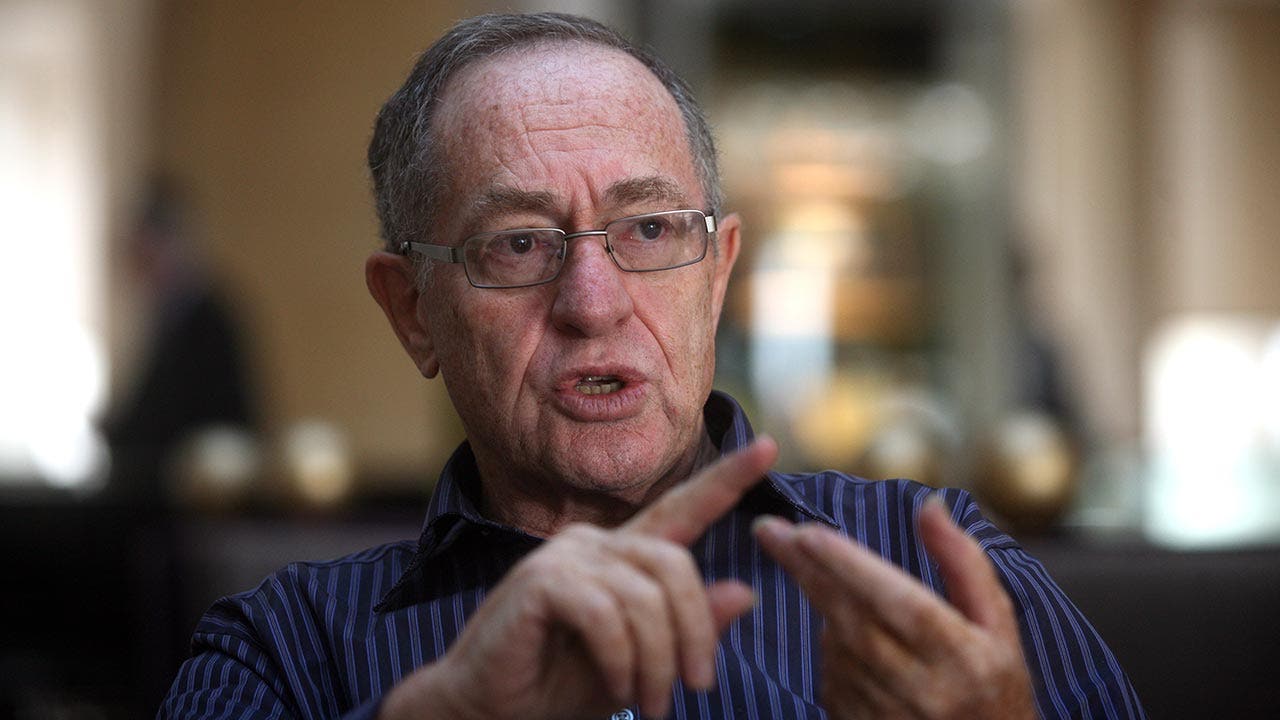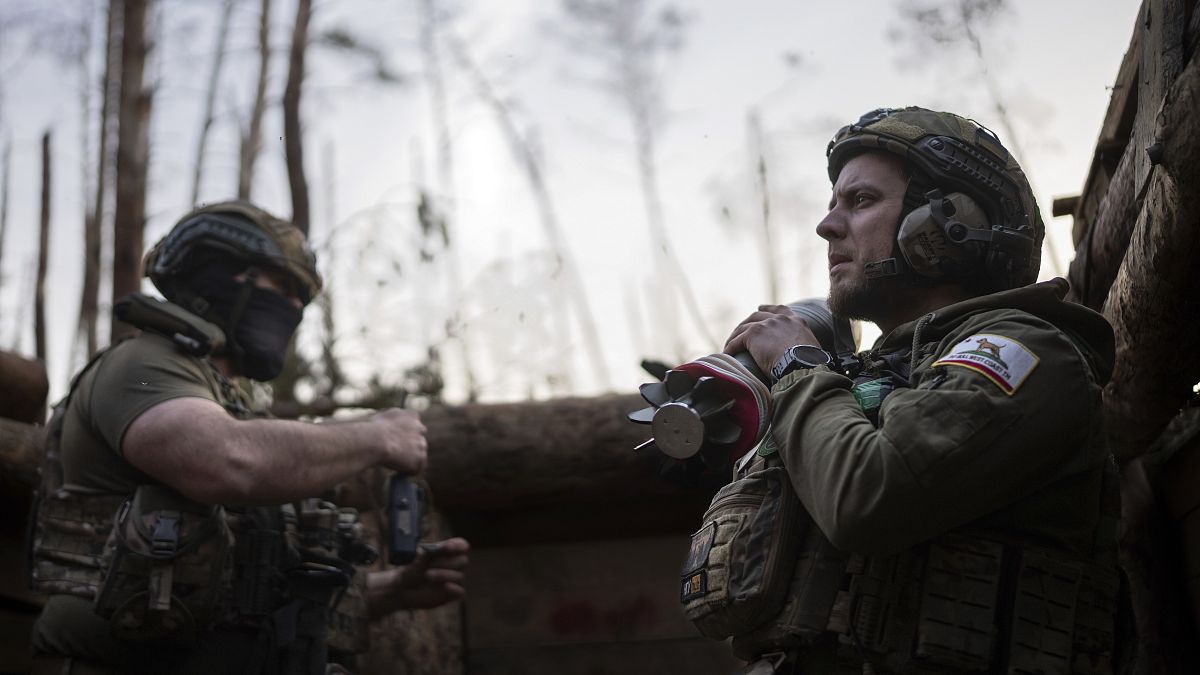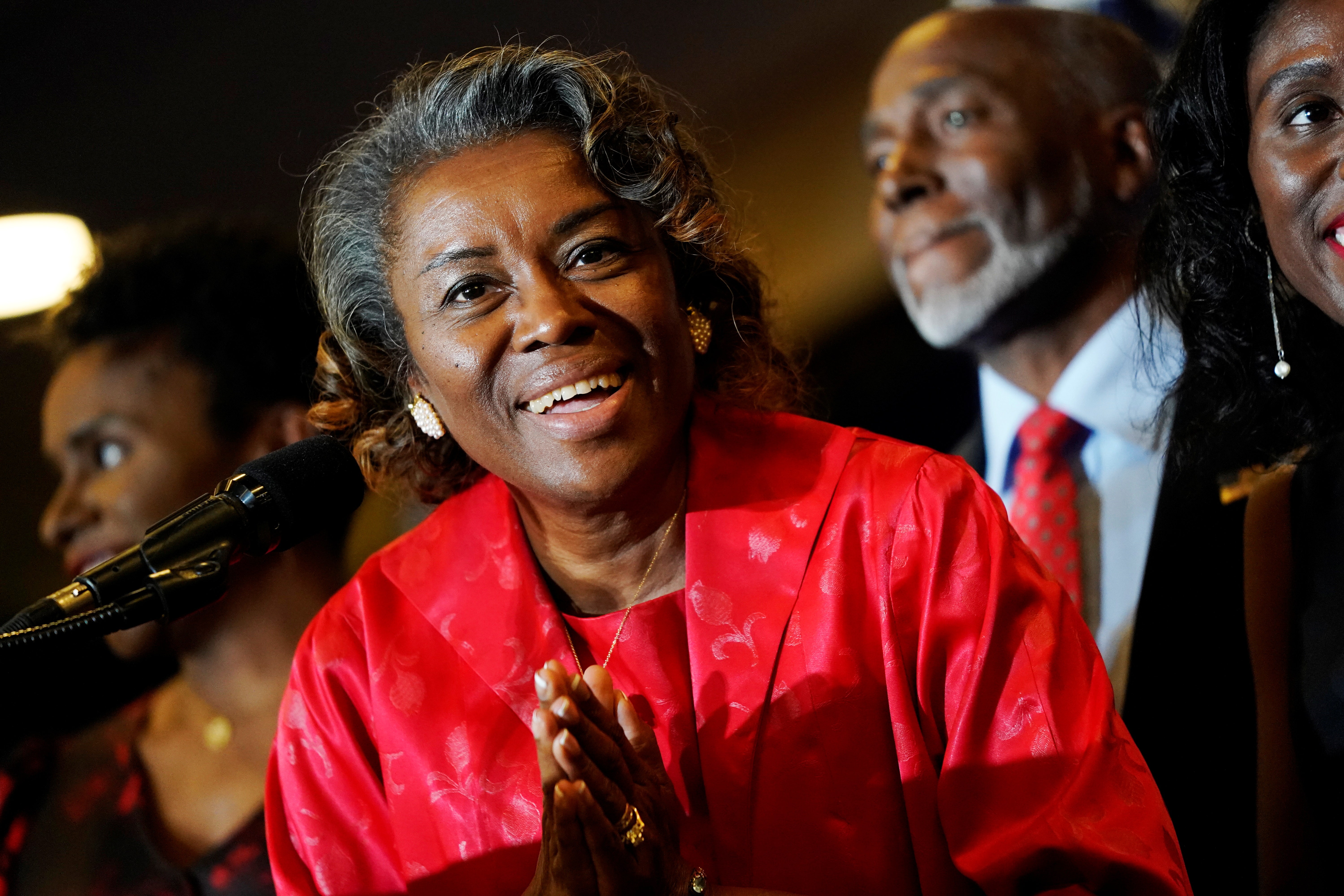Sports
Trump bashes NFL over major kickoff change: 'Beginning of the end!'
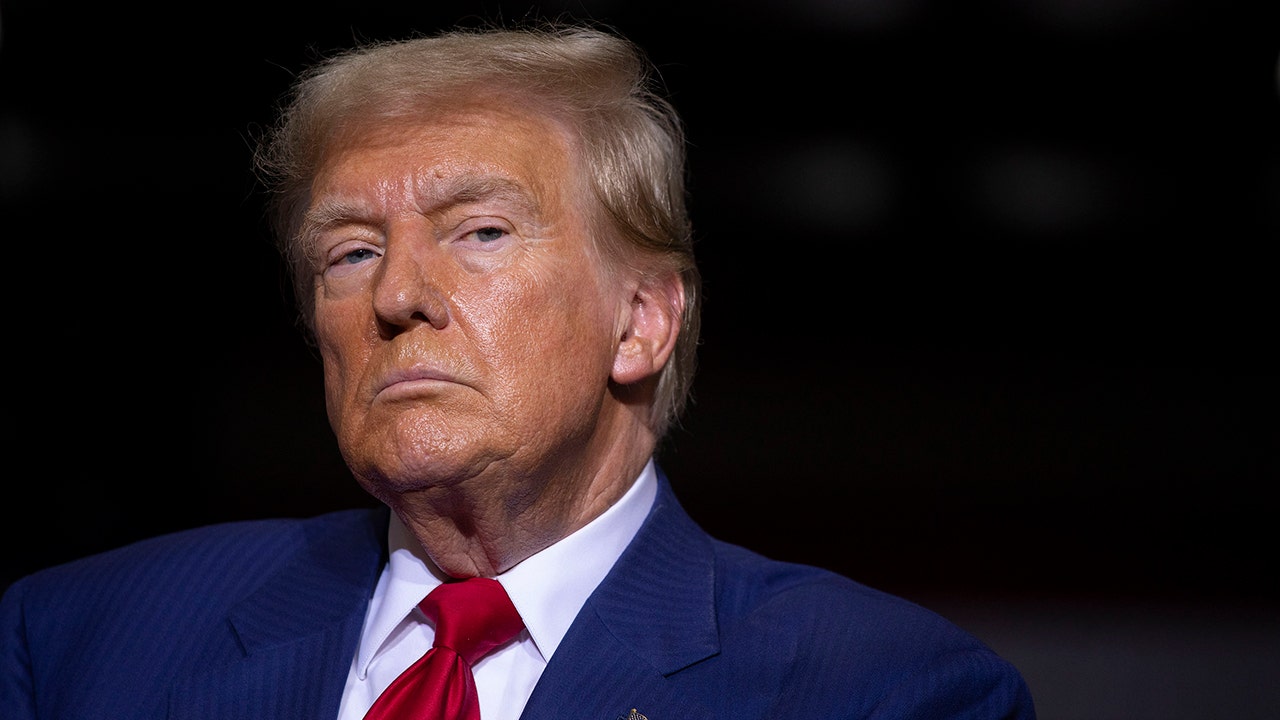
The drastic changes to the NFL’s kickoff caught the attention of former President Donald Trump on Friday, as he blasted the change in a post on Truth Social.
“I can’t believe the NFL is effectively getting rid of the always exciting Kick Off Return. Such an exciting part of football. What are they doing? BEGINNING OF THE END!” Trump wrote.
The NFL’s new kickoff rule has dramatically changed the function and aesthetic from what old-fashioned fans are used to, causing some confusion early in the season.
The new rules have changed the alignment of both teams, while also incorporating various zones that play a key role in what players are allowed to do.
Minnesota Vikings and Las Vegas Raiders players line up for the kickoff in the second half of the preseason game at U.S. Bank Stadium on August 10, 2024, in Minneapolis, Minnesota. The NFL is debuting a new rule on kickoffs this season. (Stephen Maturen/Getty Images)
Now, all kicking team players will have to line up with a foot on the receiving team’s 40-yard line, compared to when they had to line up all the way back at their own 35-yard line. The kicking team’s players must also wait until the ball hits the ground or the player is in the “landing zone” or end zone to start running. The “landing zone” is from the receiving team’s 20-yard line to the goal line.
Meanwhile, the receiving team has a designated “setup zone” which is a five-yard area from the 35-yard line to the 30-yard line, where at least nine players must line up facing the kicking team.
JETS’ AARON RODGERS HAS LOFTY EXPECTATIONS AHEAD OF RETURN TO GAME ACTION: ‘I EXPECT GREATNESS’
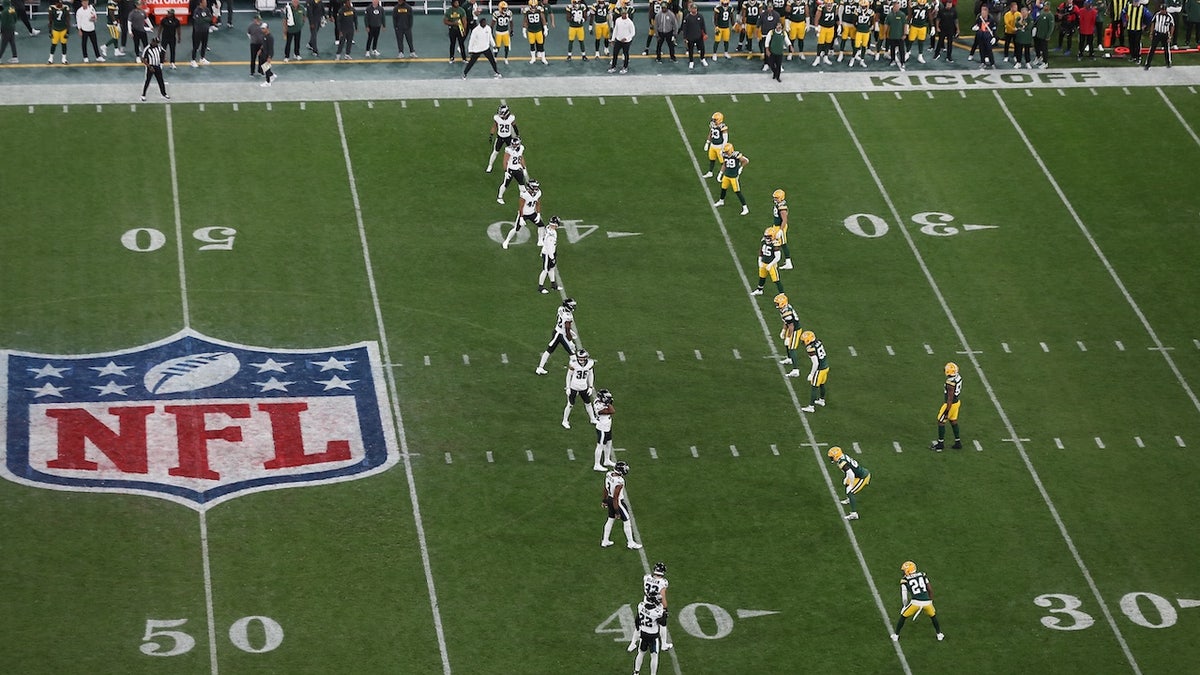
The Philadelphia Eagles and the Green Bay Packers line up for the opening kickoff at Arena Corinthians on September 06, 2024, in Sao Paulo, Brazil. (Wagner Meier/Getty Images)
There, at least seven of those nine players must have a foot on the 35-yard line. Those not on the 35-yard line will need to be in the setup zone outside the hash marks. Additionally, like the kicking team, the receiving team players cannot move until the kick has hit the ground or a player in the landing zone or the end zone.
The purpose of the changes was to reduce the risk of injuries, as the kickoff has traditionally been the most dangerous play in football while also encouraging more returns. The previous rule involved players running at one another at high speeds from long distances, resulting in common high-speed collisions.
Kickoff rules have been adjusted several times before in response to the high risk of injury from play.

NFL Commissioner Roger Goodell attends a Super Bowl Host Committee handoff news conference at the Mandalay Bay Convention Center on February 12, 2024, in Las Vegas, Nevada. (Ethan Miller/Getty Images)
In 2011, the league moved kickoffs forward five yards to the 35-yard line, making it easier to kick the ball deep into the end zone and leading to more touchbacks with teams starting at the 20-yard line. In 2016, touchbacks placed teams at 25, which further encouraged them. Then last season, returners could call for a fair catch anywhere, not just in the end zone, for a touchback, resulting in the lowest return rate in NFL history.
So, now the league is using this new rule to ensure safety while promoting returns.
This new rule is inspired by the kickoff rules from the XFL – a now-defunct lower-budget competitor to the NFL. However, the XFL merged with the USFL to create the UFL this year, and that league ironically uses the traditional kickoff.
Follow Fox News Digital’s sports coverage on X, and subscribe to the Fox News Sports Huddle newsletter.

Sports
What makes Caleb Williams different? Bears players, coaches share stories

Rome Odunze preferred to sit on the bench and reset when the University of Washington’s defense took the field. He wanted to catch his breath before the next series.
Except when Caleb Williams was the opponent. He was must-see.
Odunze already had a perception of Williams thanks to a viral moment from Oklahoma. As a freshman, Williams took the ball from his running back who was about to go down short of the first down on fourth-and-1 and converted it himself.
“I was like, ‘Oh, OK. He plays a little different,’” Odunze said.
When USC’s offense took the field, Odunze didn’t sit down. He had to see, in person, what Williams was all about.
“I was on the sideline watching like, ‘Oh, my goodness, they’re doing their thing.’ He was doing his thing with the scrambles, with the throws,” Odunze said. “That definitely confirmed it, OK, this dude’s got something different in him.”
Since Williams arrived at Halas Hall — as the No. 1 pick in this year’s draft, the Bears’ starting quarterback, and the franchise’s hope to end its decades of wandering through the quarterback desert — the descriptor used most often for what he’s done on and off the field is “different.”
Odunze saw it in college. Players and coaches had seen the highlights. Now everyone has experienced it at Halas Hall.
“I’ve followed Caleb since he was a freshman at high school,” wide receivers coach Chris Beatty said. “I’ve seen a lot of Caleb make some throws that you just look to the side and like, ‘Did you see that?’ That hasn’t really changed.”
From how he throws the football to how he interacts with his teammates, Williams does not operate like a rookie quarterback. He is sure to still have the typical rookie ups and downs, but he’s wired in a rare way for a first-year QB. Throughout training camp, in conversations with The Athletic, players and coaches recounted their first impressions that told them what Odunze already knew: OK, Williams is different.
Caleb Williams’ Bears teammates have been wowed by his ability to throw on the run. (David Banks / USA Today)
The arm talent
As Tyson Bagent prepared for his new teammate, the starter he’d be backing up, someone who had seen Williams throw told him something that stuck.
“He was born to throw,” Bagent said.
Then Bagent saw it for himself, the things Williams could do that other quarterbacks couldn’t. As Bagent described it, the extremely confident quarterback himself was emphatic about Williams’ traits.
“Just a crazy, blessed athlete,” he said.
Six-time Pro Bowler Keenan Allen could already see it when he watched USC highlights. Sure, catching the passes from Williams helped affirm it, but he already had a sense of why Williams was the no-question No. 1 pick.

GO DEEPER
USC retires Caleb Williams No. 13, reinstates Reggie Bush’s No. 5
“Probably the way he throws the ball,” Allen said. “The angles that he gets to, rolling out, whether he’s rolling right or left, it’s pretty impressive the way he can deliver it. You could see it (on tape).”
Once the full team got together at Halas Hall to begin OTAs and then training camp, the veterans could see what this new quarterback could do. The throws he made were different.
Tight end Cole Kmet: The pick he threw (in camp). I know it’s a pick. But what a crazy throw, and Tyrique (Stevenson) made an unbelievable catch on that. But just those types of throws where he’s stagnant, maybe his feet get caught in the pocket, and he’s able to rotate his hips and create that torque and whip with his arm. It’s a very pitch-like motion for baseball; it’s just really impressive. And he’s able to layer the ball with good touch and feel.
Defensive tackle Dashaun Mallory: He had a throw in the back of the end zone. It was one of those passes where it was like, man, I don’t know if I’ve ever seen any quarterback make that type of throw over two people, short amount of space for the wide receiver to get his feet in, and he throws an absolute dart.

GO DEEPER
Caleb Williams is ready for the Chicago spotlight. It’s ‘go time’ for him and the Bears
Beatty: He’s had some (throws) here in camp that you sit back and say, “Man, he spins it different.” He had Keenan on a seam, maybe three weeks ago, and just the way he threw it and the way it came off and the platform that he threw it from, you just look at each other like, “Man, did I just see what I saw?”
Offensive coordinator Shane Waldron had seen all the “incredible arm angles” on Williams’ college tape, and then on the practice fields, but he wanted to experience it in a game. It didn’t take long.
Waldron: The first preseason game against the Bills, I know we had a designed rollout that he hit Cole on, you just feel his accuracy on the move. And then in the second preseason game that he played in, obviously getting out and getting on the edge on some scrambles and seeing how he is able to do that while also protecting the ball. There’s an elegance to it.
Defensive coordinator Eric Washington: After I saw the screen pass in Buffalo … and the way he had to contort his arm, the way he had to fit the ball and just to feel and the timing of it — he held the ball long enough to get the entire defense out of position and for them to be leveraged out of the play. And so that’s unusual. That is unusual. Just to understand, OK, here comes pressure, so we’ve got one guy back here, and if we can hold this long enough and fit it through a tight window, we have a chance for this to be an explosive play. That’s not usual — that kind of feel and understanding how to make what the defense is doing work against them and make the offensive concept go. So there’s been a lot. I’ve seen a lot of things out here, his touch, his deep-ball touch, his ability to fire the ball with velocity at different angles and going away from the target. And all of those things are high-end skills.
Defensive passing game coordinator/cornerbacks coach Jon Hoke: He’s extremely accurate with throwing the football on the move. He can change his throw position to make it happen, and he goes to his left just as well as he goes to his right.
The athleticism
When a quarterback scrambles during training camp, some completions that follow can typically be dismissed. The scramble itself should count as a win for the defense’s coverage and rush. The quarterbacks, of course, can’t be hit.
But exceptions can and should be made when something impressive happens — when you know that the QB successfully eluded the rush.
One example came early in camp on July 22. Williams scrambled and then hit receiver DJ Moore streaking down the middle of the defense for a long touchdown on Field 1 at Halas Hall.
Former Bears QB Brett Rypien: It’s hard to simulate him getting outside the pocket and making plays. And, you know, he saw a little bit of it yesterday. … You go back and watch (the touchdown to Moore). And those are the type of plays you look at and you’re like, that’s special. That’s stuff you can’t teach.
Defensive end DeMarcus Walker: That’s the thing with today’s quarterbacks, you got to be able to move and throw a dot while being uncomfortable. Because you got guys moving so fast and running 4.4s, 4.3s, 4.5s. It’s definitely challenging — a guy who can run like Caleb with his quick feet. … When I saw his film, I knew that Caleb could move. Justin Fields was fast — fast fast. (Caleb) is very quick like a rabbit.

GO DEEPER
Keenan Allen on his career and what 2024 could mean for Bears WRs: ‘Sky’s the limit’
Rypien: The main thing is the on-the-run ability right away and the release is really, really good. That’s one thing you see these guys coming out nowadays. Guys that have success early, you have to have a lightning-quick release. The zoning defenders are so fast in this league. It’s so hard if you’re not able to get to your base quickly, get the ball out and get it there accurately. And he’s done that, and it’s gotten better and better.
Running back Khalil Herbert: I feel like he has at least one a day, something he does that’s just like, “Wow. Did you see that?” Sneaky, athletic. … I ran a Y route, and he no-look threw it to me. I was getting ready to run down the field and like, “Oh, the ball’s coming to me.” He was looking down the field. So he just does things that you don’t see a lot of young guys do, and he does it at a really high level. He definitely makes some of those plays every single day.
Williams also made them during the preseason. The game against the Cincinnati Bengals featured plays that give defensive coaches nightmares.
The rookie quarterback did his part on what should have been a touchdown to Odunze in the back end zone, but he followed it up by running for a 7-yard touchdown that left two Bengals defenders behind him.
Hoke: The play that he scrambled and he scored the touchdown on, he felt those guys. The way he backed out of that pocket and that situation that he was in, just feeling the lineman and was able to escape that and score, it shows that he’s got a lot of pocket presence. He feels things around the pocket, and he’s extremely accurate.
Caleb. Williams.
📺: FOX pic.twitter.com/2YcTQ98uB2
— Chicago Bears (@ChicagoBears) August 17, 2024
The maturity
Any doubts about how Williams, a superstar in college, would handle being a rookie in an NFL building were quickly dispelled.
From how he handles adversity in practice to the way he is in the locker room to the way he handles his press conferences, Williams hasn’t acted like a rookie.
Wide receiver DJ Moore: I never see him down after a certain play. Just having that short-term memory is real short-term with him. He’ll let the play go and then when we go to the sideline, bring it up, go through the whole thing. That’s unique. If a quarterback can remember all the plays that he ran and the ones he messed up for sure, we’ve got something special.
Washington: I just like the way carries himself. He carries himself with a certain level of confidence and humility. Because he’s going to go through it a little bit, and if he does, or when he does, you know that he’s going to bounce out of it very, very quickly.
Defensive tackle Andrew Billings: He acts like he’s been here. And that sounds crazy. Any rookie that acts like he’s been here, you don’t like it. But when it’s the quarterback, it’s needed. It really is needed. That’s what I watch. I watch how he is in practice. If everything doesn’t go well, like what does he do? Some guys are like, “Oh, man.” Can they go to the next play? He goes to the next play very well.

GO DEEPER
What scouts are saying about the 2024 Bears: Rising, but only third best in NFC North
Linebacker T.J. Edwards: I like when people come in, no matter who they are, rookies or a vet that signed, and they’re truly themselves. For someone to come in, especially first-round pick, all that hype, I don’t know what that feels like — he just came in and has been himself. He’s a positive dude, which I really like. … It’s easy to want to come in and try to fit this mold or narrative. He’s just himself, and that’s the best part.
Safety Kevin Byard: We’re playing cards. It may be me, Tremaine (Edmunds), Keenan Allen and Caleb. Since I’ve been in the league, I played with some good quarterbacks, he just seems like he’s part of the guys. To be a rookie, obviously, he’s already been put in a leadership position. I think he’s doing a good job bonding with the entire team and not just his offensive line or his running backs or receivers. He’s hanging with the defensive guys, we’re all hanging out in the back of the bus making jokes. You just don’t normally see that from a rookie who just got into a position where he’s around a lot of veteran guys, who’s around guys who’ve made a lot of plays in this league. I just feel like he just fits in so well with this team and the culture.
At Williams’ pro day, coach Matt Eberflus, Waldron and general manager Ryan Poles were all struck by Williams’ personality. Waldron saw Williams treating everyone at dinner, from teammates to waiters, with respect. “His ability to connect with everyone,” Waldron said. That was also evident during the preseason.
Waldron: When you see him in the family area post-practice, you don’t have to ask him to do anything. He goes and says hi to people, like Hoss (Jason Houghtaling), our assistant O-line coach, and his family who (Williams) hadn’t met yet. Or you see him in the cafeteria in those settings and you do the right thing when you’re a good person and you’ve had the right values instilled in you from your parents, and that’s really showed up with him.

Bears players and coaches say Caleb Williams carries himself like a veteran, which is unusual for an NFL rookie. (Todd Rosenberg / Getty Images)
The confidence
If “different” is the No. 1 adjective we’ve heard about Williams, “confident” would be a close second. He’s acknowledged it, and everyone who knows him sees it. Williams seems to straddle the line well between confident and cocky, which is even trickier when walking into an NFL building as a rookie.
The Bears aren’t necessarily an old team, but they have plenty of veterans. Williams has assimilated nicely on and off the field.
Linebacker Tremaine Edmunds: Particularly from a young guy, just seeing his confidence day in and day out. I think that’s the No. 1 thing that sticks out. Because no matter what the talent level is, if you don’t come in with confidence, it’s gonna take away from your athletic ability, your talent and all the things that you’re used to doing.
Byard: It might’ve been the second or third play (of the Bills game), and I think he had scrambled out to his right. It was something that most people didn’t notice, but he scrambled and he kinda held the ball out. It looked like he did it for no reason, and I was like, “What is he doing?” I asked him about it on the sideline and he said he does it because the end that’s rushing is trying to get the ball away from him. It looked as cool as s— on the field. I was like, “This guy’s feeling himself out here.” It was funny because it was the third play of his first game ever. That comfortability.

GO DEEPER
New look, same coach: Why Matt Eberflus has the buy-in from Bears players
Wide receiver DeAndre Carter: If you sit down and talk to him, his level of competitiveness is going to separate him from a lot of other guys. He wants to win and he wants to win above anything else. And not saying that it surprises me, but coming from a guy that’s always been in the spotlight, that has a lot of stuff going on off the field … for him to always have “winning football games” as the No. 1 thing that’s on his mind, I think that’s a little different or unique for someone in his position.
Linebacker Jack Sanborn: (It’s) just understanding … how defensive guys are kind of playing in each coverage and what stresses us out, and just being able to almost move us with his eyes. Like he did it early on in OTAs. He made me, for example, go one way and then hit a dig right behind me. Especially for a rookie coming out, it’s tough to do.
Caleb Williams is MONEY on the run.
📺: #CHIvsBUF on @NFLNetwork
📱: Stream on #NFLPlus pic.twitter.com/otxvQ2oyCV— NFL (@NFL) August 10, 2024
The leader
On Monday, Williams officially became one of Bears’ eight captains for this season. His selection wasn’t too surprising given the position he plays and the overall importance of it. But his selection was the result of a players’ vote.
Those who have watched Williams closely started to see his leadership abilities emerge weeks ago through his interactions with his teammates on the field during practices.
Eberflus: I could see him being comfortable in the offense to be able to now step out on what he’s supposed to do and be able to step out and help others do their job. I think that’s what you do as a quarterback. You are a multiplier. You are an enhancer of other people, and that’s what he’s done. I started to see him doing that … probably in Week 2 of training camp, which was really cool, having him talk to Cole, having him talk to DJ, Keenan, Rome, (running back D’Andre) Swift, all those guys that he’s throwing the ball to and working with those guys to make it better. And that to me was so impressive. But he didn’t do it right away. He waited until he was comfortable and he knew what he was doing and then he started to feel the offense and understand where things are and how things run. And then he was able to interject and take a leadership role.
(Illustration: Dan Goldfarb / The Athletic; photos: Perry Knotts / Getty Images)
Sports
With Gavin Stone injured, who's left to carry Dodgers' starting rotation?
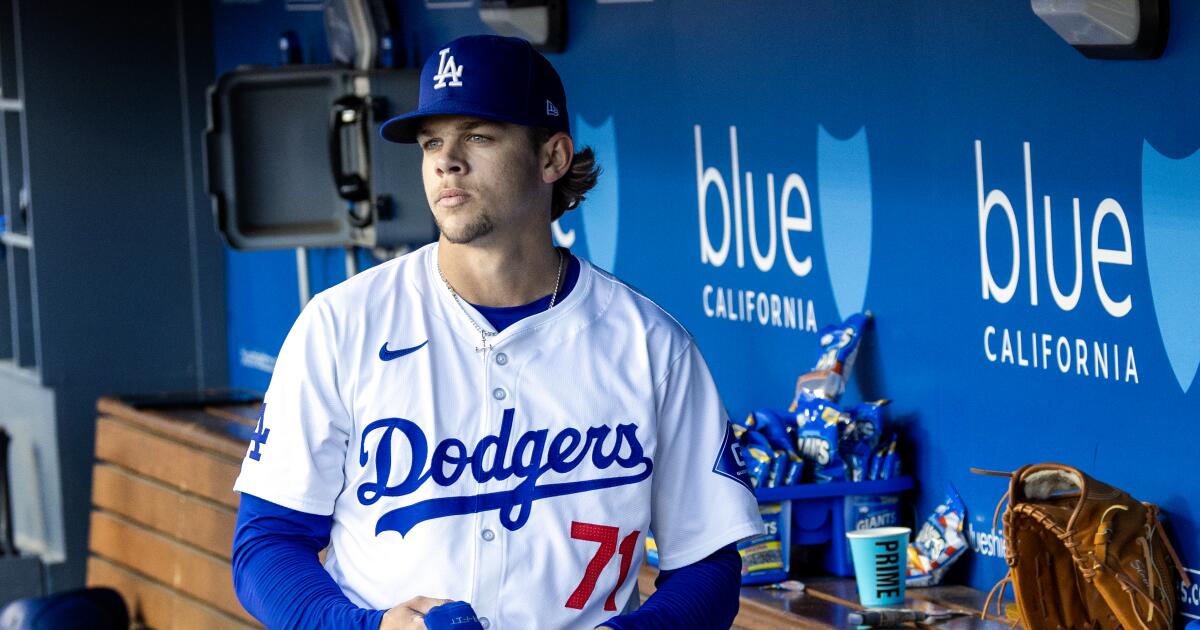
The Dodgers spent $308 million last winter to compile a star-studded roster featuring four most valuable player award winners — Shohei Ohtani, Mookie Betts, Freddie Freeman and Clayton Kershaw — enough quality arms to fill not one but two major league rotations and a deep bullpen teeming with power arms.
The financial investments — more than $1 billion in Ohtani and Japanese right-hander Yoshinobu Yamamoto alone — have clearly paid off, as the Dodgers entered play Friday with an 84-56 record, tied with the Philadelphia Phillies for the best mark in baseball.
But as the Dodgers head into the final three weeks of the regular season, a time when they’re usually making their final push toward a National League West title, fine-tuning their roster and lining up their starting pitchers for the playoffs, they will enter October with a rotation of Jack Flaherty and … just who, exactly?
“We’re gonna have enough pitching,” manager Dave Roberts said, when asked if the Dodgers rotation will be good enough to make a deep October run. “The names might be a little bit different. I don’t think anyone knows who [will] and who won’t be a part of it.”
Gavin Stone threw the latest wrench into the team’s potential playoff pitching plans when the 25-year-old right-hander, the only member of the opening-day rotation who had not missed a start this season, was placed on the 15-day injured list because of shoulder inflammation on Friday.
Stone, who is 11-5 with a 3.53 ERA in a team-leading 25 starts, is the 11th starter to go on the IL this season, and he joins a group that currently includes ace Tyler Glasnow (elbow tendonitis), Yamamoto (rotator-cuff strain) and Kershaw (left big-toe inflammation).
Yamamoto, who has not pitched since June 15, is scheduled to return for Tuesday night’s game against the Chicago Cubs, but he threw only two innings and 53 pitches in his rehab start for triple-A Oklahoma City last Tuesday and will need several starts to build up his endurance.
Glasnow, who is 9-6 with a 3.49 ERA in 22 starts, is scheduled to throw off a mound on Saturday for the first time since he went on the IL on Aug. 16, but Roberts admitted that “time is running out” for the right-hander to position himself for an impact October role.
“He’s getting off the mound [on Saturday] and he’ll probably have a more aggressive bullpen session [this week], but we just gotta know, we gotta get going,” Roberts said. “We only have so much time before he [can] get built up and he’s pitching in major league games. Time is certainly of the essence.”
Dodgers pitcher Clayton Kershaw walks off the field after giving up a home run to the Arizona Diamondbacks on August 30. Kershaw was placed on the injured list the next day.
(Christian Petersen / Getty Images)
Kershaw, who returned from shoulder surgery in late June and went 2-2 with a 4.50 ERA in seven starts before injuring the toe on his push-off foot, is playing catch to keep his arm active, but hasn’t been able to throw off a mound.
“He’s still trying to figure out the best way to provide relief [for his toe], and figuring that out is challenging,” said Andrew Friedman, the team’s president of baseball operations. “There’s not a playbook for that … it’s just not a common [injury].”
Stone will not pick up a baseball for at least 10 days, after which he will resume throwing, but when asked if he was optimistic about Stone returning this season, Friedman said, “I’m not sure … there’s just so much unknown, it’s hard to speculate right now.”
Friedman added that Stone’s injury is “really more symptom-based. It wasn’t something that was like, ‘Oh, we need to have surgery.’ It was, ‘Hey, let’s let everything calm down, pick up a ball and see where you’re at.’ If he comes back and feels good, I think we’re in a good spot. If he picks up a ball and has problems, then we’re in a tough spot.”
So, where does that leave the Dodgers? They’ll enter the homestretch with a rotation of Flaherty, Yamamoto, Walker Buehler, who showed promise in his last two starts after struggling in his initial return from elbow surgery and a hip injury, Bobby Miller, who is 2-4 with a 7.79 ERA in 11 starts, and rookies Landon Knack and Justin Wrobleski.
“It’s been a really challenging year, certainly,” Roberts said of the starting pitching injuries. “I think other teams are going through it, and fortunately we have a lot of depth, we’re giving a lot of guys opportunities, and our guys have done a great job of not fretting, continuing to move forward and remaining positive.
“I think the main thing is whatever day we play baseball, you look at the locker room and see who is available, and you try to win a game that day. I don’t mean to sound insensitive, but that’s just the way we have to look at it. I think that’s kind of the way to manage some of this stuff.”
A thin rotation could put even more strain on a bullpen that recovered from a rocky July in which it posted a 5.65 ERA and had a major league-leading nine blown saves to compile a 3.55 ERA and a major league-high 12 saves and 28 holds since Aug. 1. A prolific offense will also likely have to out-slug some of the rotation shortcomings.
“Looking at our team big picture, I think this is arguably the deepest, most balanced lineup we’ve ever had,” Friedman said. “I think our bullpen is as deep and talented as I can remember. Now, we’ve got to figure out how to line up our starters, and as guys are coming back, making sure they get enough work under their belt to hit October in stride.
“We’re going to do everything we can to put ourselves in the best position going forward. All of our focus right now is on doing what we can to finish the regular season strong and be in the best position to go out and win, hopefully, 11 games in October.”
Sports
Does a rough second half matter in October? Some World Series hopefuls might want to look away

Who doesn’t love a good what-if question, so let’s ask this one:
What if this baseball season had started in the middle of July instead of the last week of March? Have you thought much about how differently we’d be viewing nearly every contender in the sport?
Of course you haven’t. But that’s what we’re here for. So take a look at the second-half records of all the teams that would make the postseason if the tournament started today, with the Braves and Mets both included since they’re tied for the final NL wild-card spot. First, let’s look at …
The Good
Padres: 30-13
Diamondbacks: 30-14
Dodgers: 28-15
Brewers: 26-17
Mets: 27-18
Astros: 25-19
Royals: 24-20
We can talk about those teams some other time. But now let’s hone in on the rest of this group. See what jumps out at you as you peruse …
The Not So Good
Twins: 22-23
Guardians: 22-23
Phillies: 22-22
Orioles: 23-22
Yankees: 22-20
Braves: 23-22
You know which two teams jumped out at me? The Phillies and Guardians. Aren’t they the ultimate reminder that a baseball season can feel as long and winding as the Appalachian Trail?
For more than three months this season, the Phillies and Guardians owned the two best records in the sport. Then baseball happened.
On July 1, they were both on 100-win paces. Now, as that standings chart illustrates so vividly, they’ve spent the past two months playing more like an 80-win team than a 100-win team. Funny how that happens. The question is, what does it mean for their win-the-World-Series aspirations?
They’re not the first teams in history to discover how long a baseball season really is. But that isn’t the story here.
The story is: A rough second half, for teams like this, often means more than you’d probably guess it means. I’ve done the math so you don’t have to.
The wild-card era is 30 seasons old now. You’d think the wild-card safety net would have given many teams the rope to slog through a .500-ish second half — or worse — and still be ready to rock in October. But if that’s what you’d think, think again. Check out what’s actually happened, just in the theoretically more forgiving wild-card era (1995-present).
Losing second-half records, still made it to the World Series
2023 Diamondbacks: 32-39
2006 Cardinals: 35-39
2006 Tigers: 36-38
Worst second-half records, won the World Series
2006 Cardinals: 35-39
1996 Yankees: 40-37
2014 Giants: 35-31
(Source: Baseball Reference / Stathead)
Adam Wainwright celebrates after the Cardinals defeated the Tigers in Game 5 to win the 2006 World Series. (David E. Klutho / Sports Illustrated via Getty Images)
Yes, you read that right. In the wild-card era, only one team has survived a losing record after the All-Star break and still won the World Series. …
And only three teams have played .500 or worse and even lived to play in a World Series — where two of them (the 2006 Cardinals and Tigers) actually matched up with each other. …
But even if we raise the bar slightly, every World Series winner in these last three decades has been at least five games over .500 in the second half — except for the three teams above.
So what does that tell us about baseball? Let’s ask the manager of the club that had the worst second half of any of the teams on those lists — Torey Lovullo of the 2023 Diamondbacks.
“It’s an emotional roller coaster,” Lovullo told me and Doug Glanville on the latest episode of The Windup’s Starkville podcast. “This game is crazy. And it will wear you down.”
So how does any team spin through that roller coaster and survive with enough equilibrium to hit the reset button in October?
“We talk about consistency,” Lovullo said. “We just want to have guys that understand where they’re at and not get too high or not get too low. But eventually, we’re going to find our way. It’s the madness of a baseball season, and it does happen. And if you let it spiral, it will take you into a place that’s very dark. But if you believe that you’re going to find a way out of it, (you can).”
More on the Diamondbacks momentarily. But first, let’s look more closely at the Phillies and Guardians — and how worried they should be about their own second-half issues.
The Phillies

The Phillies were riding high when they swept the Dodgers in July. Then things went sideways. (Bill Streicher / USA Today)
THEIR GREATEST HITS — On July 9-10-11, the Phillies bulldozed Shohei Ohtani’s Dodgers in a three-game series in Philadelphia. So 93 games into their season, the Phillies were 61-32. They were on a 106-win pace. They were 6 1/2 games up on L.A. in the race for the National League’s No. 1 seed. They had the best pitching staff in the league and the deepest offense in the league. What could possibly go wrong? Ha.
HOW WRONG COULD IT GO? So naturally, over the Phillies’ next 35 games, they went 13-22. Only one team had a worse record over that six-week stretch. And it was — who else? — the White Sox. Just three teams had a worse ERA in that span. And the Phillies’ once-rampaging offense scored nearly 80 fewer runs in that stretch than Torey Lovullo’s Diamondbacks. So …
HOW’D THAT HAPPEN? There was one thing Dave Dombrowski knew: Whatever the heck was going on with his team, those 35 games were not telling him this group wasn’t talented enough.
“We had eight All-Stars, right?” the Phillies’ president of baseball operations said. “So that tells you you’re a very talented team. So you don’t go from a team that has a lot of talent to not having any talent.”
But Dombrowski did see several things that concerned him. One was the pitching — starting with a banged-up rotation whose issues wound up overtaxing the Phillies’ previously dominant bullpen.
Phillies pitching meltdown
| March 28 – July 11 | July 12 – Aug. 23 | |
|---|---|---|
|
Starters’ ERA |
3.17 |
4.58 |
|
Bullpen ERA |
3.32 |
5.89 |
|
Overall ERA |
3.22 |
5.10 |
But Dombrowski also was puzzled by the shocking decline of the offense after a consistently relentless first half. Next thing he knew, that same lineup spent a month re-enacting NLCS Games 6 and 7 against the Diamondbacks.
Phillies lineup meltdown
| March 28 – July 11 | July 12 – Aug. 23 |
|---|---|
|
.260/.331/.424/.755 |
.245/.309/.401/.710 |
|
3rd/3rd/4th/4th in MLB |
18th/19th/22nd/22nd in MLB |
Most of all, though, Dombrowski wondered if maybe they’d all gotten too comfortable after such a dominant first half. The Phillies had such a big lead by the middle of June, they seemed to start prioritizing what they could do to keep their core healthy for October. So Dombrowski admits he has asked himself if that possibly sent the wrong message.
“I don’t know,” he said. “Maybe we set the tempo somewhere. Maybe we started looking at the long term rather than the short term. But I’m not sure about that.”
He just knew there was time to fix what felt broken. And over the last couple of weeks, the Phillies seem to have done that, roaring through a 9-2 streak against the Royals, Astros, Braves, Blue Jays and Marlins. So what changed? We’ll get back to that momentarily. But first …
The Guardians

After a win over the White Sox on July 4, the high-flying Guardians were one of the worst teams in the AL over the next 48 games. (David Richard / USA Today)
THEIR GREATEST HITS — On the Fourth of July, the Guardians dusted off the White Sox to raise their record to 54-31. They led the AL Central by six games (after once leading by as many as nine in late June). They had the best record in the American League, the fewest runs allowed in the league and 80 more runs scored than they had at the same stage last season. So they were all set for a run at 100 wins, right? Oops.
HOW WRONG COULD IT GO? The marathon is always longer than it seems. Over the next 48 games, the Guardians went 21-27. Only two teams in the AL — the Angels and White Sox — had worse records in that stretch. The Guardians’ starting pitching imploded (10-24, 4.87 ERA). And going by their 83 wRC+, only two lineups in baseball were less productive.
By the end of play on Aug. 27, after a third straight loss at home to Kansas City, the Guardians’ nine-game pad had, shockingly, disappeared. The Royals had tied them in the standings. And a beautiful Cleveland baseball summer didn’t seem so balmy anymore. So …
HOW’D THAT HAPPEN? Was it really as bleak as all those messy factoids above made it seem? Not in the eyes of the Guardians’ unflappable president of baseball ops, Chris Antonetti.
“We had a really tough stretch of games after the All-Star break,” Antonetti said, “with seven of our nine opponents in playoff position at the time we played them.
“Last I looked,” he went on, “I think we have the second-most wins in the AL against teams with better than a .500 record. So we’ve held our own there.”
But does that record alone tell the full story of the Guardians? I’m not so sure it does.
Early in the season, balls were sailing over the fence. Steven Kwan seemed like he might make a charge at .400. And this looked like a completely different offense than the group that finished 27th in MLB in runs scored last year — and dead last in homers.
But what did the next seven weeks look like, after the White Sox left town on July 4? Not quite so picturesque!
Guardians lineup meltdown
| March 28 – July 4 | July 5 – Aug. 27 |
|---|---|
|
.245/.318/.410/.728 |
.220/.289/.360/.648 |
|
13th/11th/9th/12th in MLB |
27th/29th/28th/28th in MLB |
But also, there were …
Steven Kwan’s splits
| First half | Second half |
|---|---|
|
.352/.407/.513/.920* |
.194/.277/.286/.563** |
(*11th-best in MLB; **9th-lowest in MLB)
Like the Phillies, the Guardians seem to have rebounded in the last week or so. They’ve won five of their last seven. They’ve stretched their lead in the Central back to four games. And they averaged nearly seven runs per game in the five wins. So when Antonetti looks at these last two months, he sees just the normal “ebbs and flows to the regular season.”
He sees a rotation that looks much improved after the addition of Alex Cobb and Matthew Boyd. He sees an offense whose downturn stemmed mostly from matchups with a bunch of excellent staffs. So here was his big-picture read:
“Maybe I’m not thinking about it deeply enough,” he said. “But I’m not sure there’s too much I’d make of it. There’s not a lot of predictability to which teams win and advance once the postseason starts.”
Then he asked: “Didn’t Texas and Arizona (the two World Series teams in 2023) struggle in August last year before surging in September?”
Excellent question! The Rangers lost 16 of 20 in August and September, but then won 17 of their next 21 games. And the Diamondbacks rocked through a wilder ride to the World Series than any team ever.
On July 1, they were 16 games over .500 (50-34). But then … repeat after me … baseball happened. The Diamondbacks won only seven of their next 32, propelling them from 16 games over .500 to two games under, with 46 left to play. Whereupon they boomeranged again, going 27-15 before getting swept in their final series of the season in Houston.
It added up to a sub-.500 second half — but with a season-saving rebound in September. And if that feels like a blueprint for all the teams on our Not So Good list, it’s because it is.
For every one of those teams, September offers the opportunity to rediscover their first-half mojo. And the Diamondbacks leaned into that opportunity, then used the memory of that rebound again this season to fuel their torrid recovery from a 25-32 start.
“I think our guys have a very high baseball IQ … and this innate belief,” Lovullo said. “We used to hope we were going to win games. We were so concerned about what’s happening across the field, in the other dugout. (But now) we believe in so much of what’s going on in our space that we know we’re going to find a way to get something done every single night.”

“If you let it spiral, it will take you into a place that’s very dark. But if you believe that you’re going to find a way out of it, (you can),” said Torey Lovullo, who guided the 2023 D-Backs to an unlikely World Series appearance. (Joe Camporeale / USA Today)
So what have we learned from these rides on the baseball roller coaster? It’s as basic as a 3-and-2 fastball:
Wake me up before September ends
If all of this feels familiar to Dave Dombrowski, it’s because he has seen this movie before. Heck, he lived this movie — with the 2006 Tigers.
“It’s funny. I was talking to Jim Leyland (the manager of that Tigers team) about 2006 just recently,” Dombrowski said. “And we agreed that one of the common denominators was: You must have had a really good first half … to qualify for the postseason and still be below .500 in the second half. So basically, it usually means the talent is there. And for some reason, you’ve fallen off. So why?”
Why? Dombrowski believes there’s no more important question for any team to contemplate. When a team begins to slide, there is almost always more than one reason. But the danger sign he’s always on the lookout for is when a team with a big lead takes its foot off the accelerator.
“Sometimes,” he said, “some people will become somewhat, I don’t know if this is the right word, but content. They’ll lose a little bit of that extra fire. And even though that’s not good, what you need to do is rekindle that fire — to find it again in order to be successful in the postseason.”
That’s exactly what happened to that 2006 Tigers team, he believes. So “the key to getting back on track,” he said, “is the ‘why’ — and how do you fix it?”
In 2006, Leyland delivered a message to his troops that September: Let’s get focused. And over the past couple of weeks, Dombrowski said, his manager in Philly, Rob Thomson, has empowered the leaders in his clubhouse to sing that same tune.
“It’s something they’ve talked about,” Dombrowski said, “something they’ve worked on. And I think they’ve already gotten that message across. I think we’ve played much better (recently). And we really needed to get that back in gear.”
Is the baseball marathon a series of ebbs and flows? It always is. And sometimes those ebbs and flows even strike in September. But as October nears, Dombrowski has long understood, the best teams know it’s the ability to play with focus and energy every day that often separates the champs from everyone else.
So in baseball, September isn’t foliage time. It’s focus time.
“It’s just one of those things,” he said, “where you just need to kind of get it back. When you win a lot of games early, you put yourself in a position where you can withstand that little lull.
“But you’re not going to win a championship,” Dombrowski said, “if you continue to have that lull going into the postseason.”
(Top photo of Phillies outfielder Brandon Marsh: Matt Krohn / Getty Images)
-

 World1 week ago
World1 week agoSwiss court convicts two executives of embezzling $1.8bn from 1MDB
-

 Movie Reviews1 week ago
Movie Reviews1 week agoSlingshot (2024) – Movie Review
-
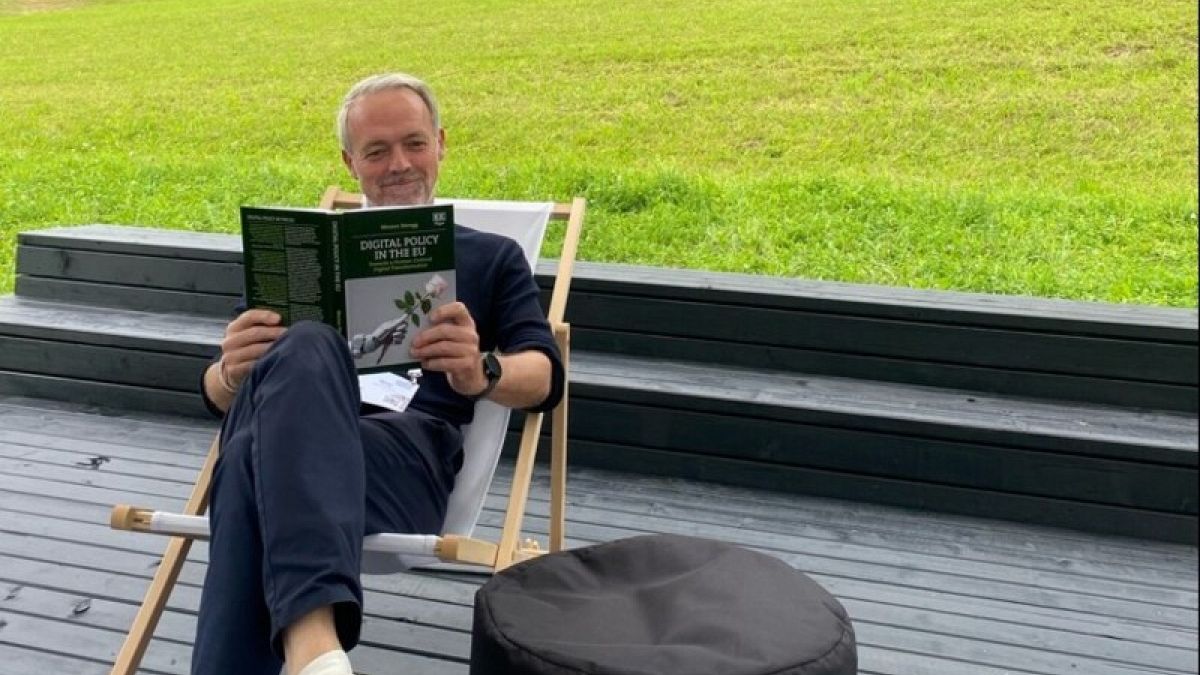
 World1 week ago
World1 week agoCommission mandarin flags convergence of digital with industry
-

 News1 week ago
News1 week agoAfter months on the run, a murder suspect falls through the ceiling and into custody
-

 News1 week ago
News1 week agoTrump Vs Harris: The Battle Over Hot Mics Heats Up Ahead Of Key Debate
-

 World1 week ago
World1 week agoEconomic portfolios are key in talks to chose new EU commissioners
-
/cdn.vox-cdn.com/uploads/chorus_asset/file/25535555/STK160_X_TWITTER__B.jpg)
/cdn.vox-cdn.com/uploads/chorus_asset/file/25535555/STK160_X_TWITTER__B.jpg) Technology1 week ago
Technology1 week agoX’s Grok bot now points to government website after election misinformation warnings
-

 Movie Reviews1 week ago
Movie Reviews1 week agoSaripodhaa Sanivaaram Movie Review Rating









